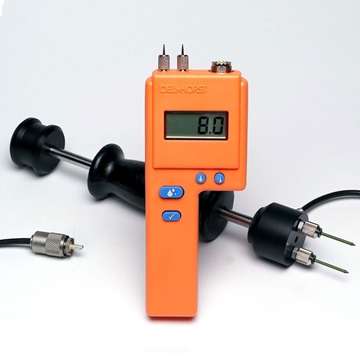The equilibrium moisture content (EMC) of a material surrounded at least partially by air is the moisture content at which the material is neither gaining nor losing moisture. The value of the EMC depends on the material and the relative humidity and temperature of the air with which it is in contact. The speed with which it is approached depends on the properties of the material, the surface-area-to-volume ratio of its shape, and the speed with which humidity is carried away or towards the material (e.g. diffusion in stagnant air or convection in moving air).
For anyone who works with wood products on a regular basis, there are a couple of reasons why it is important to know the point at which wood will reach its EMC, as well as the average moisture content of the region where the wood will be used.
As wood absorbs or bleeds moisture, it will expand or contract. The more moisture that is absorbed or displaced, the more severe the expansion/contraction of the wood product. This can cause, as seen in previous topics, cupping, bowing and another deformation of wood as well as cracks and even splits.
It can take a few days for wood to fully acclimate to a given environment, depending on the original moisture content of the wood, the temperature of the new environment, and the relative humidity of the area. Generally speaking, the greater the difference between the moisture content of the wood and the EMC point of the wood, the longer it will take to fully acclimate.
Moisture meter as used in Kaltimber
Make sure to check with your wood supplier what is their wood EMC and what the humidity of its future environment is.
Reclaim wood such as Ulin tend to be already really dry but its high density makes it harder to acclimate to a new environment. We are not talking about a few days in this specific case but more a couple of weeks to avoid any long term issue.

